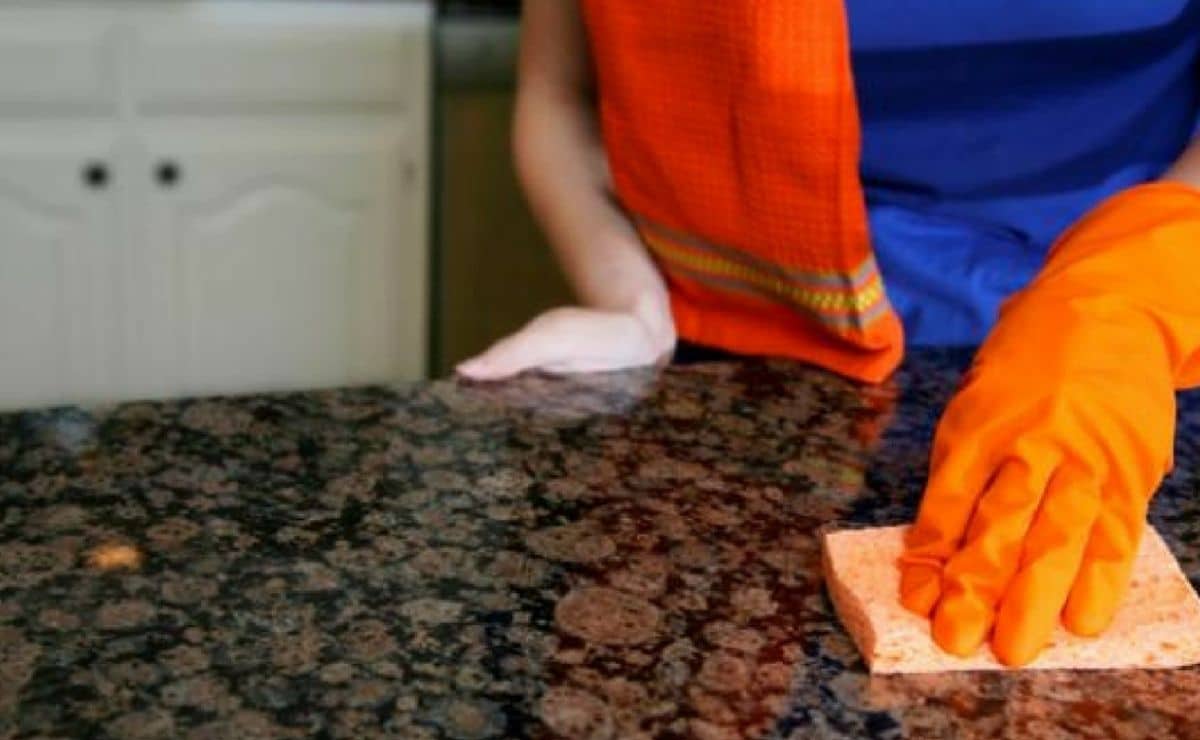The most common material used for cladding is marble, especially in countertops. It is a stone that has been known since ancient times and remains the most sought-after stone for all types of home, office, and other decorations. It is very soft and delicate, it adds an elegant touch to the place where it is placed. It is distinguished for being an extremely refined element used mostly in kitchen, floor and bathroom decorations, as well as in art, and can be found in different colors, types and styles. Marble is such a special stone that it requires much more constant care, so we will show you how to clean marble.
Whether on countertops, floors or walls, marble should be well treated when cleaning your home, because as we have said, it is a refined stone that requires special maintenance, that is, according to the material and its circumstances. If you want to have it always shiny and free of scratches, it is important to take care of it with specific products that not only clean it but also keep it protected. Bearing in mind that the mistake of using excessive quantities is made believing that it is good for the marble, we are going to explain the best way to clean according to the type of stone.
Tips for cleaning marble according to its type
To understand a little of why it is necessary to take care of marble, you must first know that this compact metamorphic rock is formed from limestone rocks, subjected to very high temperatures. In turn, that rock is the one that has changed by forming from other materials existing on the surface through a unique set of circumstances, so they are distinguished according to the grain. Marble from different quarries is strikingly different, hence the need to know how to clean each of them.

How to clean white marble
It is the favorite of many for its great ability to give spaciousness and elegance to the space. White marble is widely used in kitchens, flooring, bathrooms and countertops. The golden rule for cleaning white marble and any other marble is to use neutral pH soap and not abrasive soap. Regular dish soap works great; mix it with hot water. You can pour it into a spray bottle or put some on a damp cloth.
Once the mixture is ready, start cleaning the marble surface, rinse well and dry immediately. Avoid using too much soap so that a film does not form. If the surface has a stain, rub half a lemon on it and let it act for a few minutes but not too long because the acid can damage the stone. Then, rinse and wipe with a dry cloth.
Hydrogen peroxide is also an excellent product for cleaning white marble. You only have to create a mixture with water and apply it directly to the surface. You do not need to rinse, however, do not overuse the product because excess is detrimental to the marble.
How to clean travertine marble
This type of marble is mostly used in floors and bathrooms, so it tends to suffer from moisture stains and mold. A mixture of neutral soap and warm water also works on this stone; the difference is that you must use a soft brush to scrub to remove the dirt. When finished, wipe the surface with a damp cloth.
For stains, make a combination of equal parts baking soda and water, plus a squirt of your usual disinfectant . Mix until a paste is obtained, cover with a thick layer the area of the travertine marble you wish to clean, and leave it to act for 15 to 30 minutes. After the time has elapsed, clean with a damp cloth.
How to clean black marble
The cleaning of black marble does not vary in any way from that applied to white marble. The best thing to do is to wipe the surface with a damp cloth from time to time. This is the fundamental step to restoring the shine and removing dust and dirt. Do not forget to dry or aerate to avoid humidity. Any spilled liquid must be cleaned up immediately so the marble does not absorb it. Do not forget to keep it always dry and free of any dirt.
How to clean Indian green marble
Indian green marble has the particularity of being strong and compact. There are two probabilities at the moment of its extraction; it has few or very marked white veins. Its characteristics make it the preferred choice for interior design because of the special atmosphere it creates and, in a few cases, for bathrooms. Despite all these aspects, its maintenance does not change concerning the other colors. The recommendation, in this case, is to ventilate the bathroom so that the humidity does not allow the formation of molds.